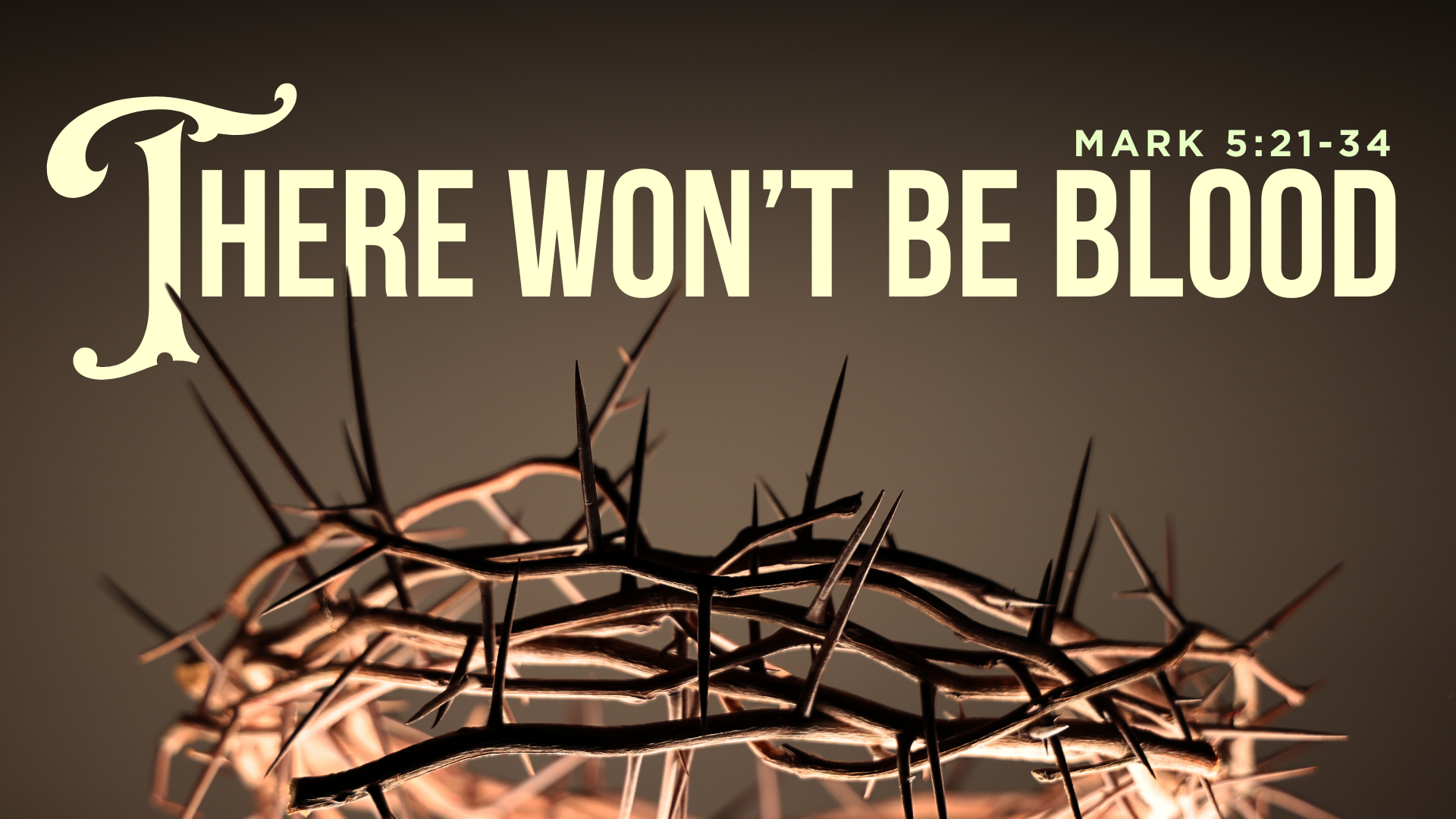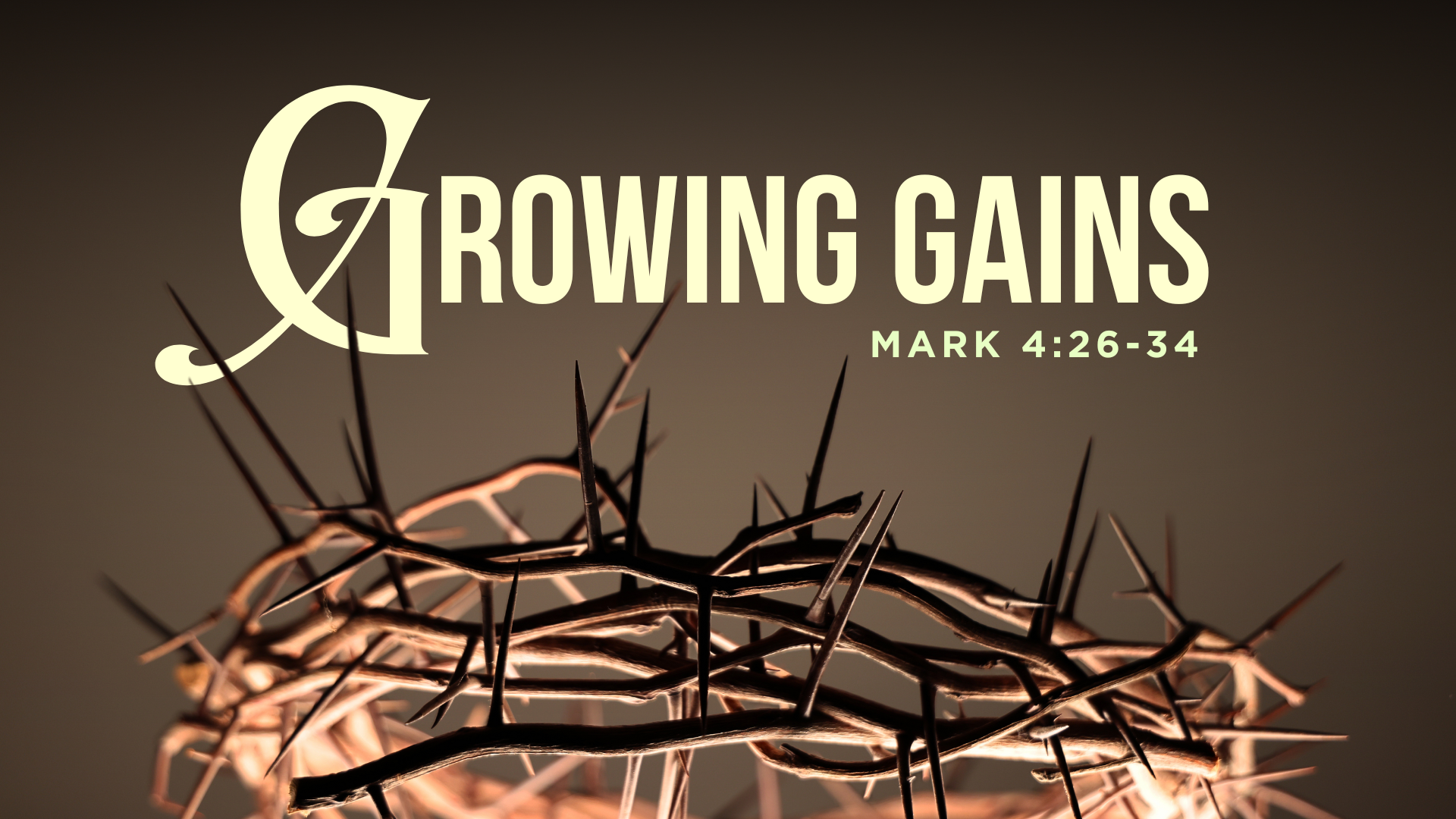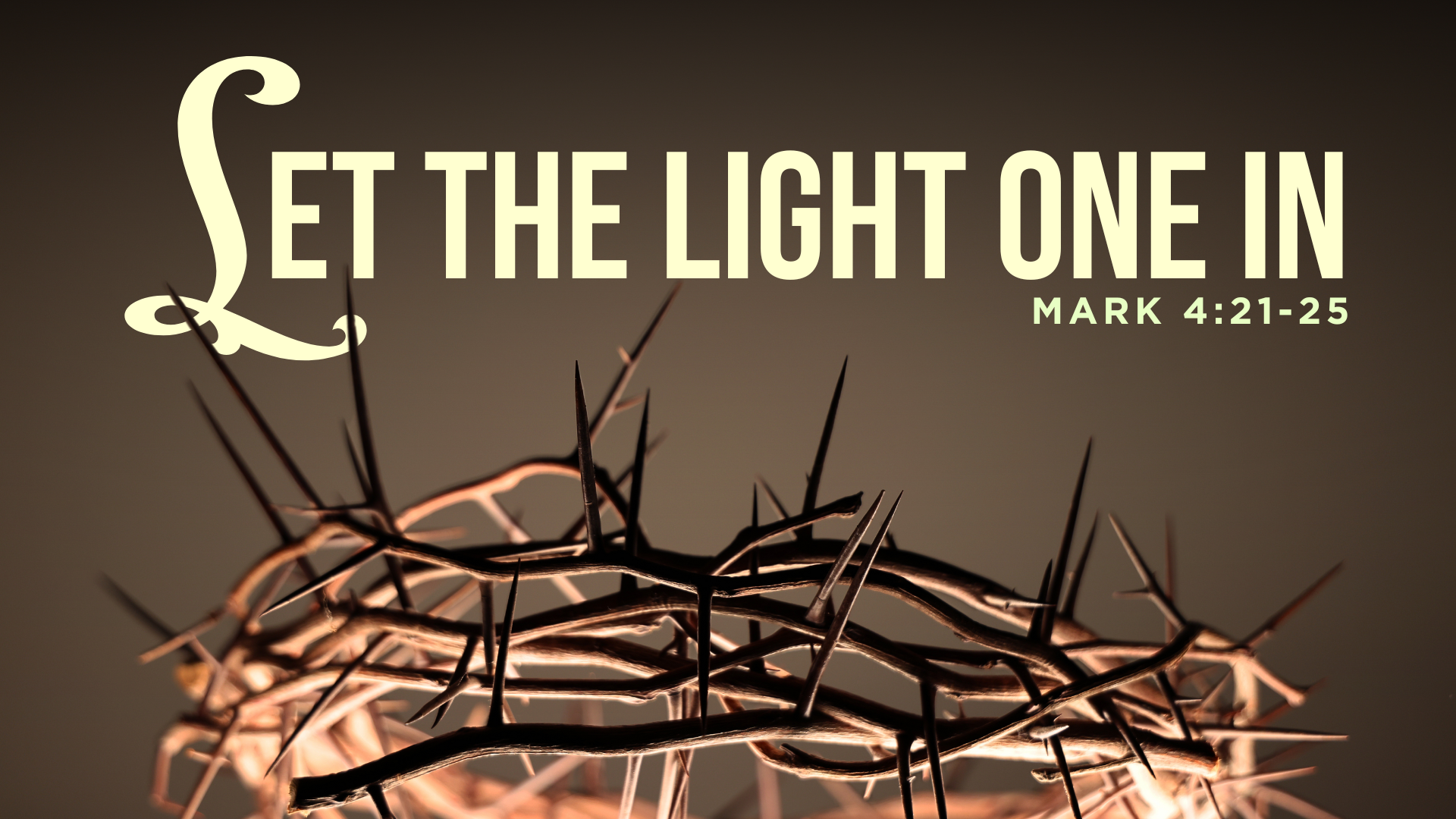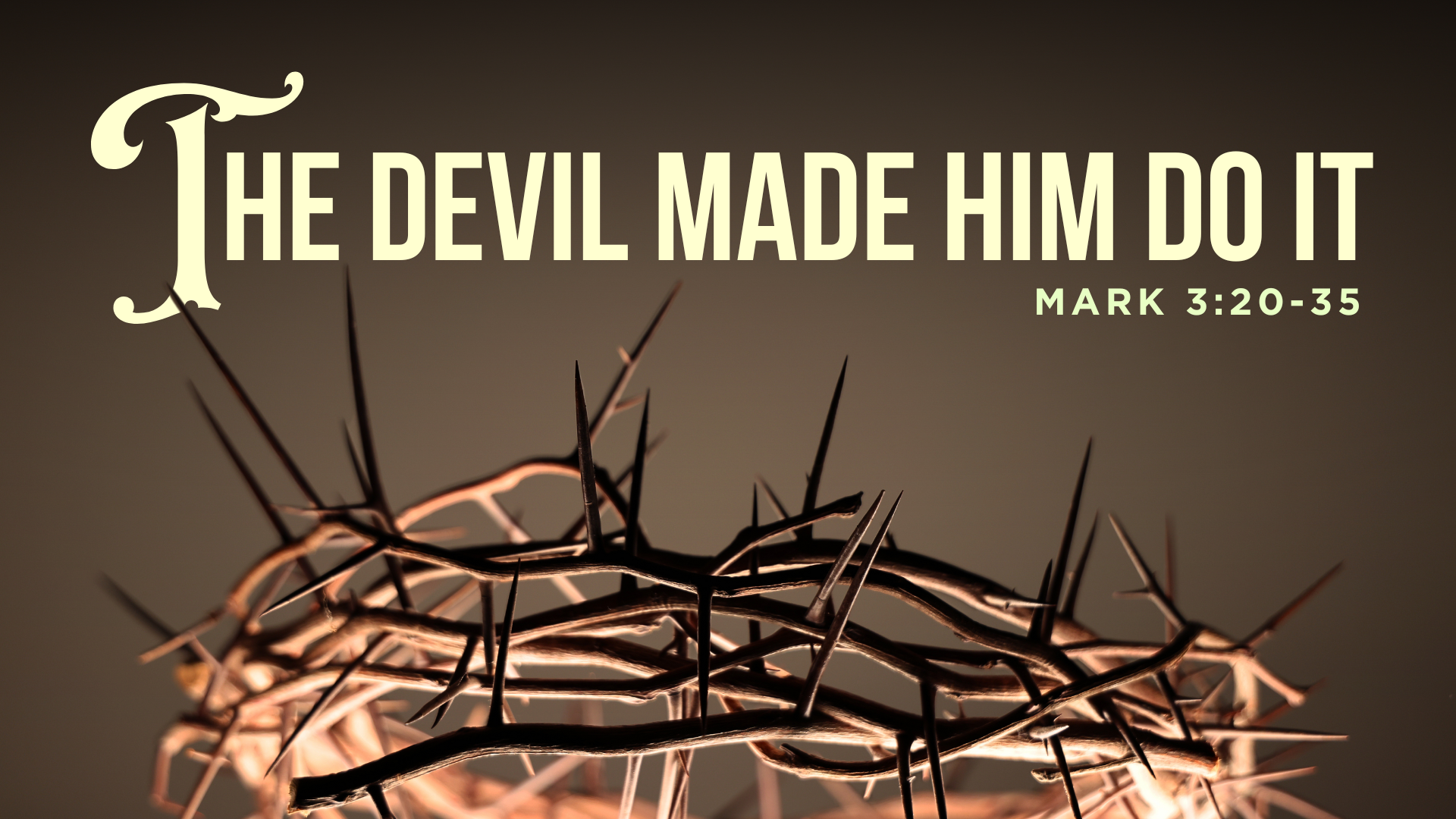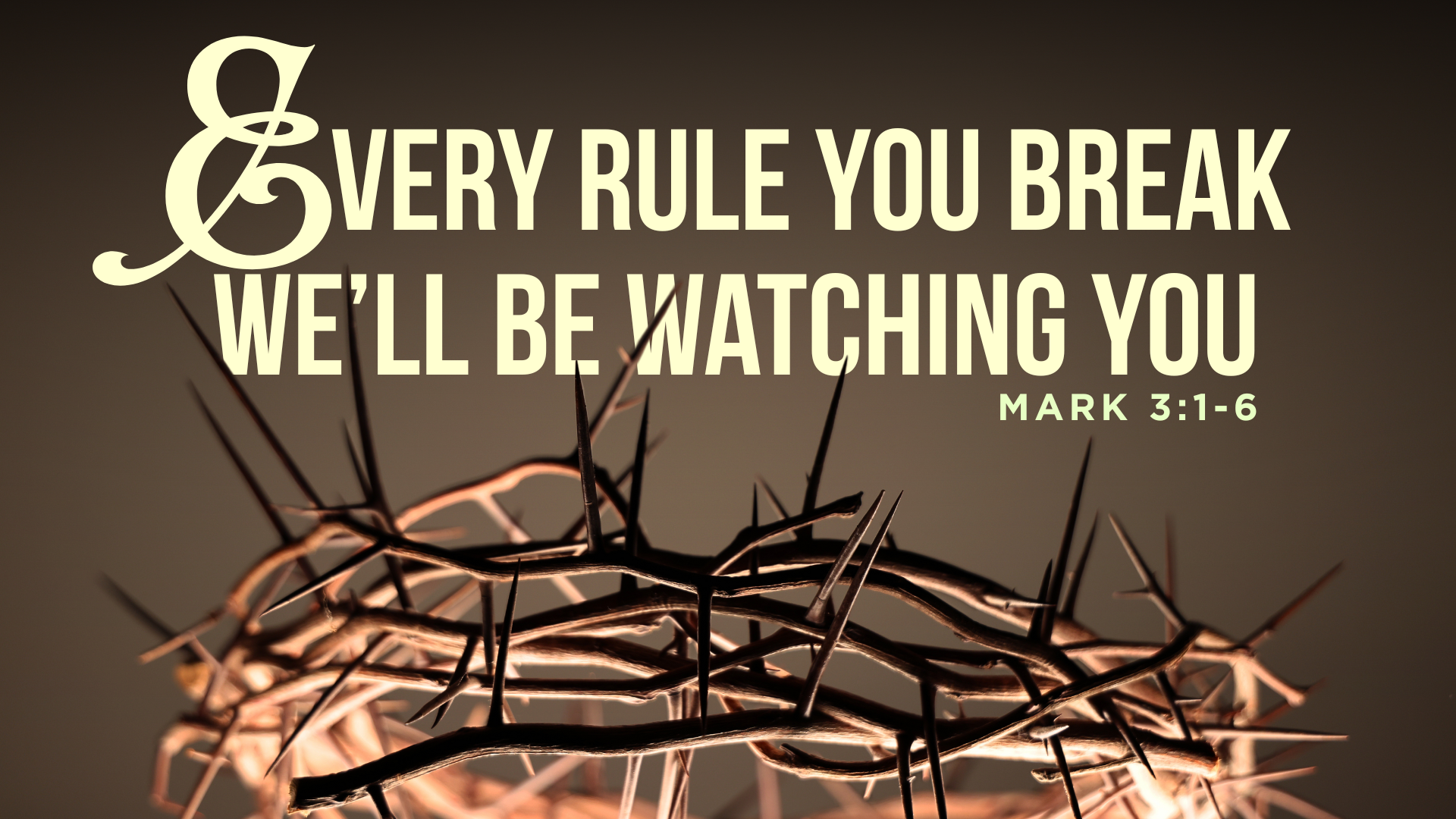
Is Anyone Else Seeing This? (Mark 5:35-43)
In 400 BC, Aristotle ranked sight as the most importance sense, then hearing, then smell, taste, and touch.[1] Sight, he said, was the most essential to experience and survive in the world.
It’s hard to overestimate how much we rely on sight. Did you know that the olfactory bulb, which is like our CPU for smelling, takes up about 0.01% of our brain matter. Just 3% of your neurons are dedicated for hearing.[2] But the visual cortex takes up about 1/3 of your entire brain.
It makes sense. Seeing is terribly important in life, not only as we experience it but as we make choices accordingly.
It’s a bit of a shock, then, when the Apostle Paul hits us with eight of the most famous words in all the Bible – words you may have adorning the walls of your home:
2 Corinthians 5:7 – 7 For we walk by faith, not by sight.
Paul was not just speaking in esoteric or theoretical terms. That verse comes to us as he discusses life and death, the suffering we experience, our burdens and our hopes.
According to Paul, these eight words should regulate our lives, our attitudes, our choices, and our understanding of what is really true, even if we can’t see it. We walk by faith, not by sight.
That is easier said than done. Easier read than lived. And yet, that is the kind of faith that Christ calls us to – one that willfully, actively trusts Him and obeys Him, in spite of what our eyes may see.
In our text, there are multiple groups who come to an intersection of faith and sight. Would they not only believe, but a faith that obeys, despite what they saw or expected? Let’s take a look.
Mark 5:35 – 35 While he was still speaking, people came from the synagogue leader’s house and said, “Your daughter is dead. Why bother the teacher anymore?”
Jairus is the name of the synagogue leader. He would’ve been a man of high social standing, probably a man of means, seen as a pillar in the community. On this day, he was just a desperate father. He came to Jesus and begged Him to come lay His hands on his daughter. Jesus was on the way when they were interrupted by the woman who touched the hem of Jesus’ garment.
At this point, a lot of commentators say that these messengers were showing anger or derision toward Jesus – that if He hadn’t slowed down the girl wouldn’t have died. That they thought if He really cared, He would’ve hurried.[3] But, how long of a delay do you think it really was? Ten minutes at most? And, obviously the girl died before they sent the messengers, who then came and found Jairus. So, this wasn’t some long delay.
I don’t see anger here, rather they’re coming and saying, “It’s over.” Even if this marvelous Teacher had healed lepers and cast out demons. Death was different. Death was the end.
And, sadly, death was all too common, especially among children. Some records show that 50% of children did not survive into adulthood in that part of the world.[4] But, whether Jairus waited too long to humble himself and come to see the Rabbi from Nazareth, or whether the illness simply moved faster than he anticipated, now, according to these eye-witnesses, the girl was gone.
Mark 5:36 – 36 When Jesus overheard what was said, he told the synagogue leader, “Don’t be afraid. Only believe.”
Don’t you love how aware and observant Jesus is? There’s a mob of people pressing in on Him and He feels a woman touch His tassels. While He’s finishing up His conversation with her, He hears what these guys say. Be encouraged that no matter what it looks like or what you might be feeling, our Lord sees you, He sees what’s going on in your life, He sees into the deepest part of your heart, He hears your prayers, and He intends to commune with you all the days of your life.
Now, these messengers came with a true report: Jairus’ daughter was no longer among the living. But Jesus immediately grabs this father’s attention and effectively says, “Don’t look at them. Don’t listen to them. Listen to Me.” Jesus’ message to Jairus was, “Stop being afraid, just keep on believing.”[5] The word He used for “believe,” linguists point out is in the present, continual sense.[6] Right here, right now, despite the report, despite the apparent evidence, Jairus had a choice. Standing face-to-face with his worst fear, would he choose belief over fear?
We don’t hear his response, but we see it as he walks on with the Lord.
Mark 5:37 – 37 He did not let anyone accompany him except Peter, James, and John, James’s brother.
These three are often referred to as the “inner circle” of Jesus’ disciples. They would also be at the Transfiguration and Jesus will bring them further into the Garden of Gethsemane than the others.
Now, let’s be honest for a minute. How would you feel to be left out? To not be picked to witness the greatest miracle anyone had ever seen thus far? Imagine you’re Andrew, Peter’s brother. I mean, you’re the one who brought Peter to Jesus! You’re the one who said, “I think we’ve found the Messiah.” And you see these other brothers get to go together. And your brother is getting these special opportunities, while you hang out in the street.
The truth is, if we were ranking disciples based on what we read in the Gospels, I think we would put Andrew as starting quarterback. But that’s not what the Lord did. And it’s not because these other guys had better faith. I don’t know why Jesus made these choices. But He did. The question for the nine was, would they still believe with obedience when it looked like they were being sidelined? Did they trust the Lord enough to not be jealous? To not become bitter or resentful? To not start comparing themselves to the other disciples? But to obey faithfully and trustingly, even when the situation looked a bit embarrassing for them?
Mark 5:38 – 38 They came to the leader’s house, and he saw a commotion—people weeping and wailing loudly.
Matthew’s account explains that there’s a crowd of people here along with flute players.[7] This clues us in to the fact that at least some of these people are professional mourners. Believe it or not, that was the custom. In fact, in the Mishnah – which was completed in about 220 AD – even the poorest Jews were encouraged to hire at least two flutists and one wailing woman when someone died.[8] Jairus, being a synagogue leader probably had a larger group.
If it seems like it was too soon for all this, remember this is first century Palestine. No coroner is coming. No refrigeration. Bodies decomposed quickly, so burial happened quickly.[9] Given how many people were already there, it seems the family had expected this little girl to die.
In the house there would’ve been a lot going on. The wailing included instruments plus choral or antiphonal singing accompanied by handclapping. Mark says it was an uproar.[10]
He also keeps calling Jairus “the leader.” Why keep using his title when we know his name? Well, it puts his plight in perspective. You see, he was supposed to see to the care of the synagogue. He was supposed to see to the care of his family. He was supposed to be the one people could follow for spiritual guidance. His title could be translated a “ruler” of the synagogue.[11] But in reality, he was in just as much need as the Gadarene demoniac or the woman with the issue of blood. The leader would have to exercise enough faith to follow the Lord, Who was the true Ruler of nature, of the supernatural, of disease, and of death. And the true Ruler was also the real Master of the house.
Mark 5:39 – 39 He went in and said to them, “Why are you making a commotion and weeping? The child is not dead but asleep.”
Some will use this verse to say that the girl wasn’t actually dead but that she was just in a coma. All three of the synoptic Gospels – including the one written by a physician – agree that she was dead. The New Testament, at times, uses sleep metaphorically when speaking of death. And certainly, from Christ’s vantage point, she was about to wake back up into this life.
Jesus was asking this group to believe in a big way. There’s the body – lifeless. But He asks them to ignore what they see and instead choose to believe Him. Faced with the sight of death, would they believe in Christ’s new life?
Mark 5:40 – 40 They laughed at him, but he put them all outside. He took the child’s father, mother, and those who were with him, and entered the place where the child was.
The phrasing indicates that they not only laughed, but they kept jeering at Him.[12] The fact that they could switch so quickly from wailing to scoffing shows they didn’t actually care for this family. They’re working a job. And, frankly, for being professionals, they aren’t acting very professionally.
But man oh man are they going to miss out. And they miss out because they chose to see rather than believe. Luke explains, “They laughed at Him because they knew she was dead.”[13] They saw it with their own eyes! But what they thought was rock-solid, superior knowledge was the very thing that led to their exclusion. In this moment they lived by sight, not by faith.
Jesus had no desire to impress them or even to shame them by proving them wrong. So He tossed them all out. The term used for “put them outside” is one Mark also uses for casting out of demons.
Mark 5:41 – 41 Then he took the child by the hand and said to her, “Talitha koum” (which is translated, “Little girl, I say to you, get up”).
Jews living in Palestine at this time spoke Aramaic.[14] They would need to know Greek, too, given their proximity to Greek-speaking Gentiles in the region, but Aramaic was the language they used at home and with each other. Religious Jews like Jesus would’ve also known Hebrew. In fact, we see Jesus reading a Hebrew scroll in Luke chapter 4.[15]
But His day-to-day speech was Aramaic. The nicknames He gave Peter, James, and John were all Aramaic. There are a variety of other Aramaic words we come across in the Gospels.
Here the phrase is very simple and very tender. He calls this child, “Little girl,” or it could also mean, “Little lamb.”[16] And once again we see Him take someone by the hand. He did so for Peter’s mother-in-law. He touched lepers. He touched cripples. He touched the demon possessed. He is a Savior Who is not afraid to embrace us – to handle our lives and hold us in His hand.
Mark 5:42 – 42 Immediately the girl got up and began to walk. (She was twelve years old.) At this they were utterly astounded.
This was not the girl’s final resurrection – sadly she would have to die again one day – but this is one of the most important events in human history. Because the One Who came saying He was the Christ had now raised the dead.
Paul would explain in 1 Corinthians 15, “[Christ] must reign until He puts all His enemies under His feet. The last enemy to be abolished is death.”
This scene was not the final abolition of death, but it was a precursor. Jesus is the One. He really is the Messiah that will save us from sin, from death, from hell, and bring us everlasting life.
The gir immediately started walking. No slow rousing, no initial weakness or confusion. She demonstrates how Christ raises us up – we were dead in trespasses and sins – and He raises us to a life of walking. Walking with Him. Immediately empowered by His Word and His enabling.
And this stack of stories in Mark 5 shows that the Lord involves Himself with all who have faith in Him – He does not exclude people. He will save young or old, Jew or Gentile, rich or poor, chronically ill or suddenly stricken, “holy” looking people or defiled people, people of high social status or those who have been cast out. He is the Lord of all, the Savior of all.
For their part, the 5 witnesses didn’t know what to think. They were astounded. Bewildered. They could hardly believe what they had just seen. So, the Lord helped with some instruction.
Mark 5:43 – 43 Then he gave them strict orders that no one should know about this and told them to give her something to eat.
Wait – how could they not tell people? All the people just outside the door are going to see the girl alive in like 2 minutes.
We don’t really know why Jesus put this restriction on them. Maybe Jesus wanted to avoid being invited to every funeral in the nation for the foreseeable future.[17] Maybe He wanted to try to shield the girl from the kind of non-stop attention she might get.
It doesn’t really matter. That’s what He asked. “But Lord, this looks like a great opportunity to prove to the Scribes and the Pharisees You are the Messiah.” But this is what He wanted.
And then, He very tenderly sees to her ordinary needs. Let’s get this girl a sandwich! Let’s have some lunch. The Lord does care for our ordinary things. He’s a hands-on Master and Friend to us.
Would Jairus believe in the face of fear? Would the mourners believe in spite of what they saw? Would the 9 believe when they wanted to see what He’d do? Would the parents believe God’s next steps after this miracle were better than what conventional wisdom might dictate?
Do we walk by faith and not by sight? We’re supposed to. We’re supposed to live out our daily, ordinary lives by prioritizing and trusting the Word we’ve heard and the leading we’ve received. The problem is, our sight gets in the way.
There is a fascinating phenomenon researchers call the McGurk effect. It demonstrates how our brains prioritize what we see over the evidence of other senses like hearing. In fact, our brains will sometimes see something and then override what we hear, telling us we’ve heard something else, even when it’s not true.[18]
Not a big deal when we’re talking about “Ba” and “Fa,” but it becomes a very big deal when we’re talking about what the Lord has said versus what we see in life around us. May we be those who trust our Lord for Who He is and live in such a way that we stop being afraid but keep on believing.
| ↑1 | https://www.discovermagazine.com/which-sense-do-humans-rely-on-the-most-41976 |
|---|---|
| ↑2 | https://www.seyens.com/humans-are-visual-creatures/ |
| ↑3 | Ralph Earle Mark: The Gospel Of Action |
| ↑4 | Craig Keener The IVP Bible Background Commentary: New Testament, 2nd Edition |
| ↑5 | Earle |
| ↑6 | Ben Witherington The Gospel Of Mark: A Socio-Rhetorical Commentary |
| ↑7 | Matthew 9:23 |
| ↑8 | James Brooks The New American Commentary, Vol. 23: Mark |
| ↑9 | Keener |
| ↑10 | John Walvoord and Roy Zuck The Bible Knowledge Commentary: An Exposition of the Scriptures |
| ↑11 | James Strong A Concise Dictionary of the Words in the Greek Testament and The Hebrew Bible |
| ↑12 | Archibald Robertson Word Pictures In The New Testament |
| ↑13 | Luke 8:53 |
| ↑14 | Frank Gaebelein, D. A. Carson, Walter Wessel, and Walter Liefeld The Expositor’s Bible Commentary, Volume 8: Matthew, Mark, Luke |
| ↑15 | https://www.history.com/articles/jesus-spoke-language |
| ↑16 | Morna Hooker The Gospel According To Saint Mark, Clifton Allen Matthew-Mark |
| ↑17 | Ray Stedman Mark 1-8: The Servant Who Rules |
| ↑18 | https://www.seyens.com/humans-are-visual-creatures/ |
